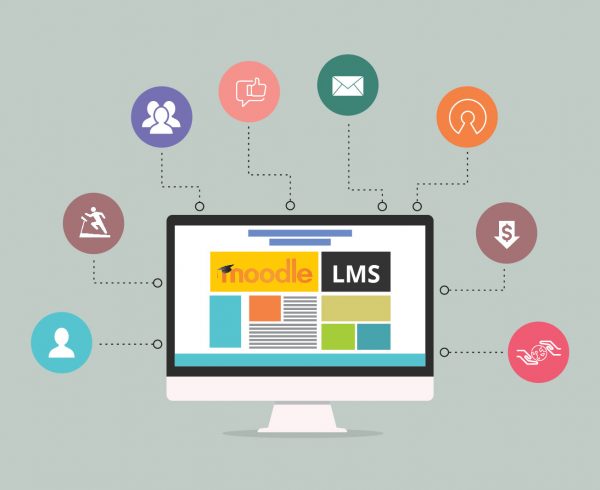Student engagement plays a vital role in making learning impactful and engrossing for K-12 learners. This is simply because the majority of the students may not find subjects such as science, history or mathematics interesting as it takes a lot of mental effort to grasp the concepts.
The use of technologies such as immersive animations and simulations can prove to be instrumental in making concepts interesting, thus improving student engagement and overall learning outcomes.
In this blog, we learn more about the use of animations in K-12 learning and how these immersive animations help improve learning outcomes.
Table of Contents:
- How does Animation in K-12 Learning Works and What are the Advantages
1. Clear understanding of concepts
2. Interactive learning
3. Enables visualization
4. Experiential learning
5. Easy accessibility and affordability
6. Fast and easy learning - To Wrap
How does Animation in K-12 Learning Works and What are the Advantages
Animation accounts for a massive part of the multimedia sector and is quite a popular medium with young students. It is something students want to explore, experience and learn as it enables them to think out of the box and apply their own imagination as well as rational thinking.
Animation in learning occurs when various pictures, images or drawings are placed and played in a particular sequence to create an illusion of movement. The last few years have seen the use of animation in education gaining rapid popularity due to the several advantages it offers.
Apart from easing the process of learning complex concepts for students, the use of immersive animation also brings learning to life and can be applied to nearly all K-12 subjects. This allows educators to make learning fun, easily explain various concepts with the help of visual representations, and promote experiential learning.
Some of the key advantages of using animations in improving K-12 learning outcomes are explained below-
1. Clear understanding of concepts
Research suggests that K-12 learners tend to understand different topics well when the information is offered to them in the form of an immersive experience using animations. Animation in K-12 education makes use of visuals for learning to present various abstract concepts and give a clear picture of the lesson to the learners.
For instance, the use of animation makes a demonstration of body parts functioning much more fun and understandable in biology. Similarly, in physics, the concept of force can be made more engaging and interesting through the use of animations by demonstrating different examples of the topics with the help of various animated characters performing certain tasks.
2. Interactive learning
Since different learners have different learning styles, the use of animation, graphics, videos, and audio makes learning much more interactive and participatory in nature.
Apart from this, animated videos are short and cover specific, relevant content to grab learners’ attention and ensure that they don’t digress from the concept. As a result, learners develop their skills and knowledge conveniently through short visual representations.
Different interactive learning strategies allow learners to interact with the course content easily and comprehend the concepts faster. Further, in this learning style, the retention rate is higher as the concepts are in the form of interactive and fun videos.
3. Enables visualization
Using 2D and 3D animations in K-12 learning allow students to visualize and better understand a variety of complex questions in an easier way. As an audio-visual medium, animation keeps learners engaged physically as well as mentally.
For instance, questions related to algebra and word problems are quite difficult for K-12 students to understand and comprehend. However, demonstrating the same questions in an animated form helps students to visualize the problem and better understand the question. This makes it more meaningful for the students and leads to better learning outcomes.
4. Experiential learning
Animation in K-12 education helps present different abstract concepts through virtual reality, which brings more flexibility in learning intricate concepts. There are various science experiments that are dangerous for students to perform in real-life even though they form a crucial part of learning. Bringing animation and VR for such concepts or experiments allows learners to perform them in a much safer environment with complete accuracy of results.
This gives learners an invaluable experience that they could only get when doing these experiments in real life. Moreover, animation offers an alternative to learners through experiential learning as they cannot learn each concept practically while attending virtual classes.
5. Easy accessibility and affordability
Another advantage of employing animation in K-12 education is its easy accessibility and affordability. Unlike the popular notion that animated videos are expensive to implement, they are quite affordable, thus allowing educators to use any form of animated videos without compromising on quality.
Easy and ready availability is another benefit of using animation in education. One animated video can be used by educators to teach many learners. Further, students can also revisit a video for revising the concept anytime, anywhere with just a smart device and a stable internet connection.
6. Fast and easy learning
Although time-consuming to produce, animations are much more time-saving material for students to learn. This is simply because visuals are processed much faster than text in the brain and also help to retain information for longer.
Additionally, immersive animations create a visually enticing learning experience for students that allows for a real interactive experience without having to bear the cost of expensive machinery rentals or live shoots. The best part is that once created, the number of learners who can use the material is unlimited, thus recovering the cost of investment of creating animations.
To Wrap
Using animation to achieve better learning outcomes in K-12 education is a rising trend. Besides improving engagement and students’ creativity, it also helps to enhance learner motivation. However, to ensure that animated educational videos fit K-12 learners’ specific needs, it is important to consider thoughtful instruction design and powerful implementation strategies to ensure that students receive the maximum benefit in terms of better learning outcomes.











